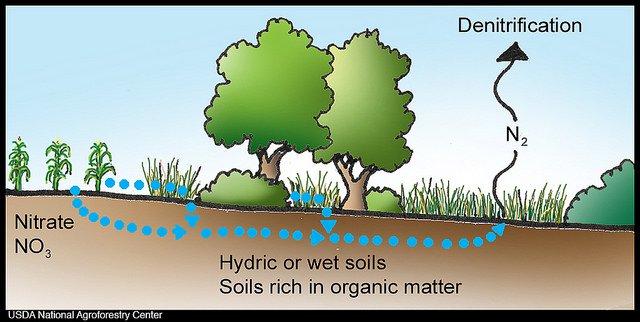Biological De-Nitrification Process in Waste Water Treatment System

Denitrification
- Biological reduction of nitrate to nitric oxide, nitrousoxide, and nitrogen gas
- Involves both nitrification and denitrification
- Biological nitrogen removal (BNR) is more cost effective and used more often as compared to ammonia stripping, breakpoint chlorination and ion exchange;
- BNR is used in wastewater treatment where
- there are concerns for eutrophication;
- where groundwater must be protected against elevated NO3‐N concentration;
- where WWTP effluent is used for groundwater recharge and other reclaimed water applications
Process Description
Two modes of nitrate removal can occur in biological processes:
- Assimilating and
- Dissimilating nitrate reduction
Assimilating nitrate reduction
- Involves reduction of nitrate to ammonia for use in cell synthesis;
- Occurs when NH4‐N is not available and is independent of DO concentration
Dissimilating nitrate reduction
- Nitrate or nitrite is used as electron acceptor for oxidation of variety of organic or inorganic electron donors
Substrate driven (preanoxic denitrification)
- Figure 7‐21 (a) most common process used for biological nitrogen removal (BNR) in municipal WWT;
- Process consists of anoxic tank followed by aeration tank;
- Nitrate produced in aeration tank is recycled back to anoxic tank;
- Organic substrate in influent WW provides electron donor for oxidation reduction reactions using nitrate; Process is termed substrate denitrification;
- Furthermore, process is known as preanoxic denitrification because anoxic process precedes aeration tank
Endogenous driven (postanoxic denitrification)
- Figure 7‐21 (b), denitrification occurs after nitrification
- and electron donor source is from endogenous decay;
- Process is termed as postanoxic denitrification as BOD removal has occurred first and is not available to drive nitrate reduction reaction
- Depends on endogenous respiration for energy
- Much slower rate of reaction than preanoxic processes
- Exogenous carbon source such as methanol or acetate is added to provide sufficient BOD for nitrate reduction and to increase rate of denitrification
- Include suspended and attached growth systems












